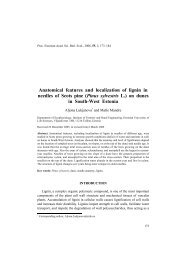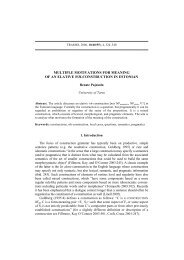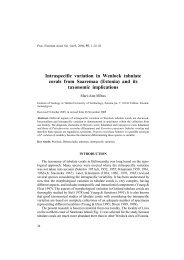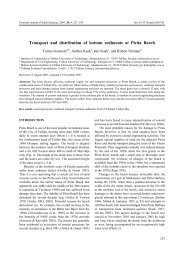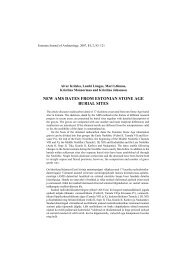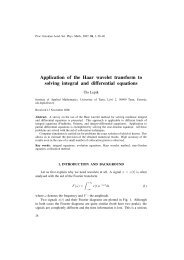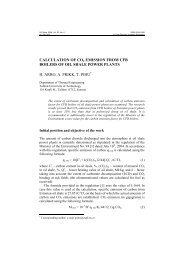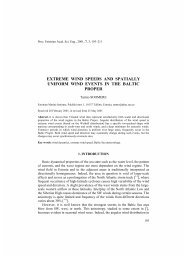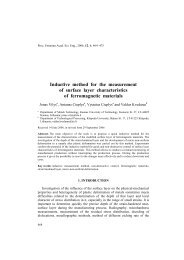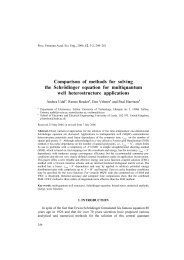Dynamic coefficients in impact mechanics
Dynamic coefficients in impact mechanics
Dynamic coefficients in impact mechanics
Create successful ePaper yourself
Turn your PDF publications into a flip-book with our unique Google optimized e-Paper software.
where α<br />
1<br />
is the <strong>impact</strong> angle. The <strong>coefficients</strong> of the velocity restitution k and<br />
of the dynamic friction f can be calculated as<br />
| vn<br />
|<br />
2<br />
k = ,<br />
(16)<br />
| v |<br />
n<br />
1<br />
f<br />
| v v − |<br />
t<br />
= (17)<br />
+<br />
2 1<br />
.<br />
(1 k) | v |<br />
t<br />
n<br />
1<br />
The experimental data about the variation of the <strong>coefficients</strong> with the <strong>impact</strong><br />
velocity and angle are presented <strong>in</strong> Figs. 5, 6 and 7. For composite materials the<br />
coefficient of restitution decreases slightly when the <strong>impact</strong> angle <strong>in</strong>creases.<br />
Much lower rebound effect is observed when a more plastic material (steel) is<br />
0.935<br />
Restitution coefficient<br />
0.930<br />
0.925<br />
0.920<br />
0.915<br />
0.910<br />
0.905<br />
0.900<br />
0.895<br />
0.890<br />
W15<br />
C20S<br />
C20<br />
0.885<br />
0.880<br />
20 30 40 50 60 70 80 90<br />
Impact angle, deg<br />
(a)<br />
0.750<br />
Restitution coefficient<br />
0.700<br />
0.650<br />
0.600<br />
0.550<br />
0.500<br />
0.450<br />
0 10 20 30 40 50 60 70 80 90<br />
Impact angle, deg<br />
(b)<br />
Fig. 5. Coefficient of velocity restitution vs <strong>impact</strong> angle: (a) cermets; (b) steel.<br />
32



